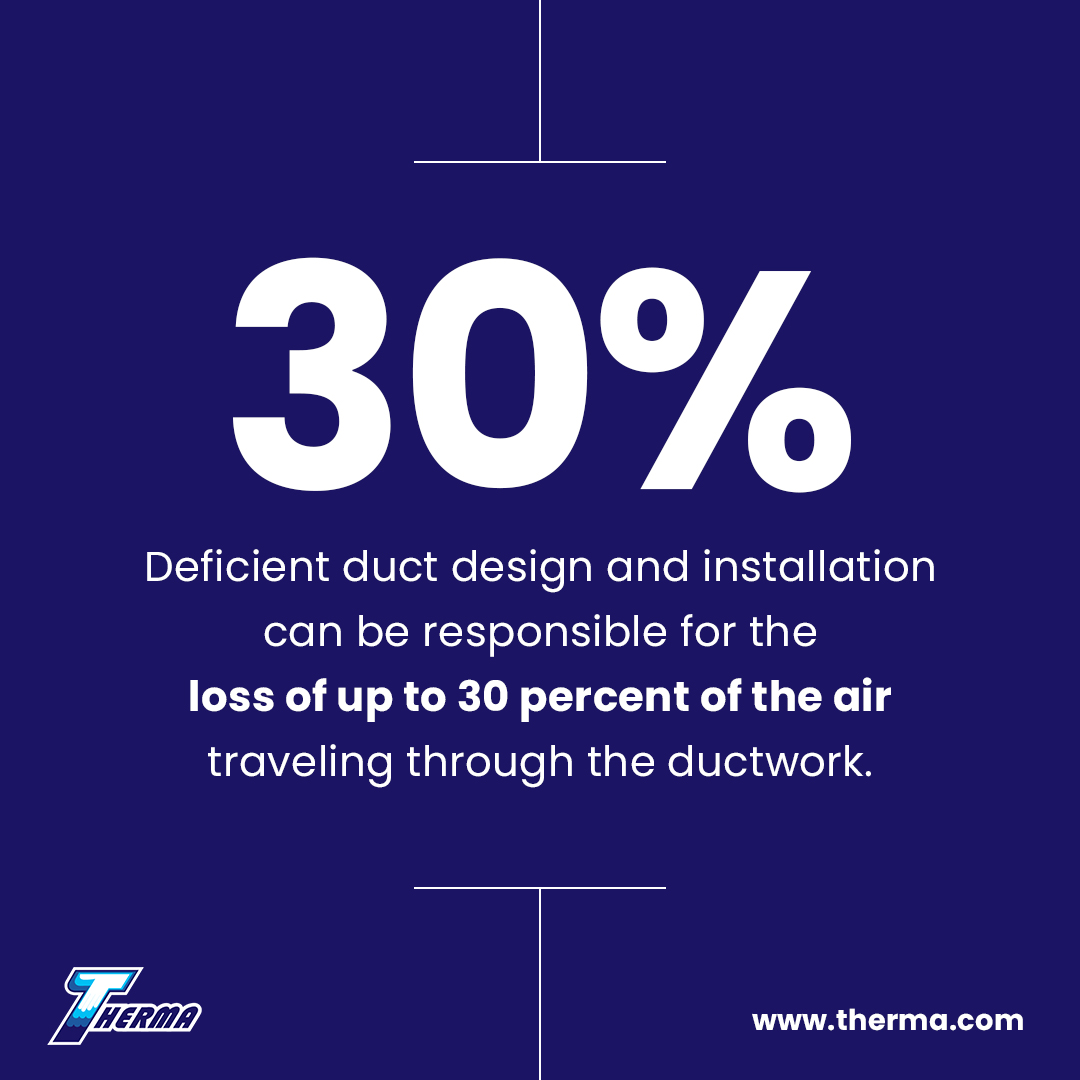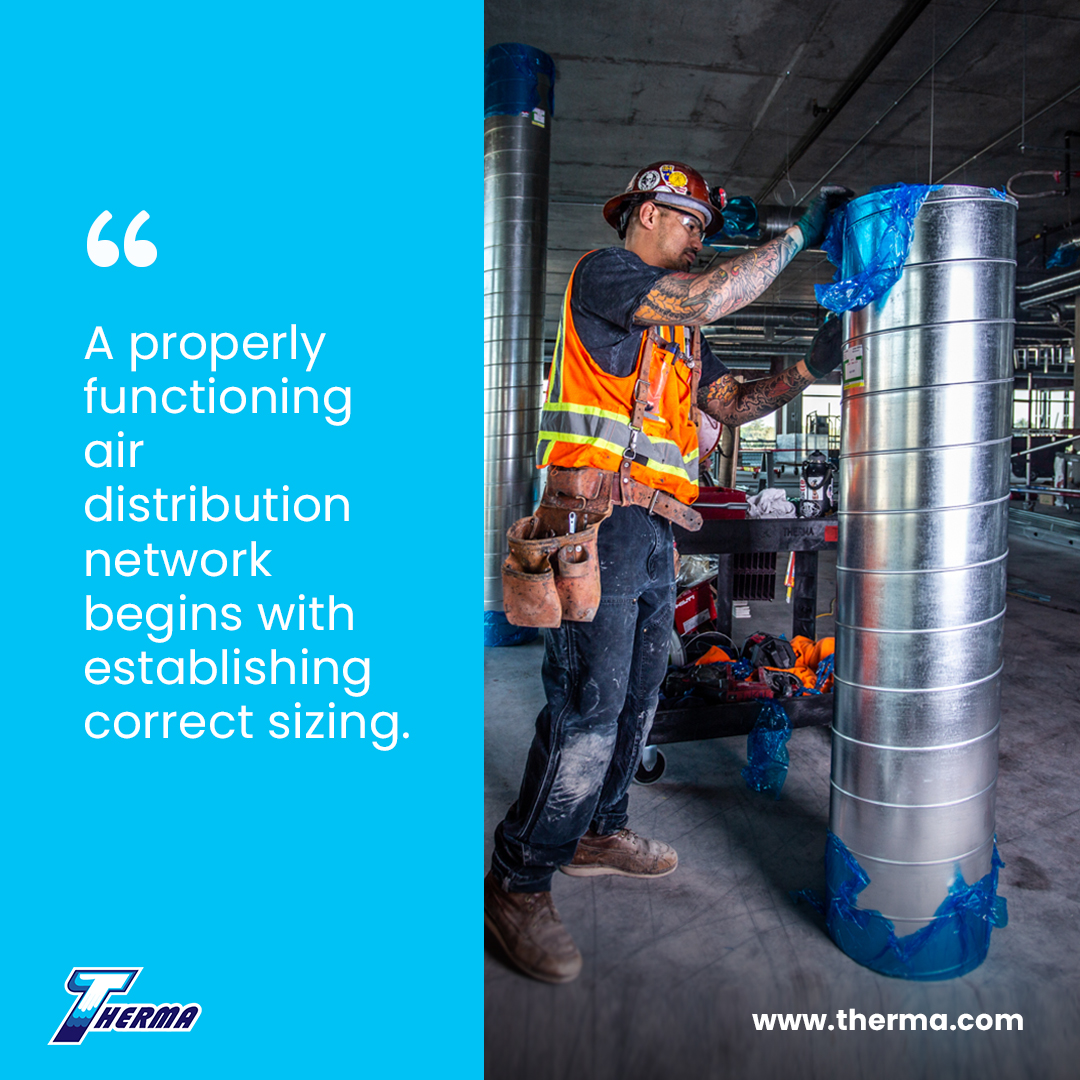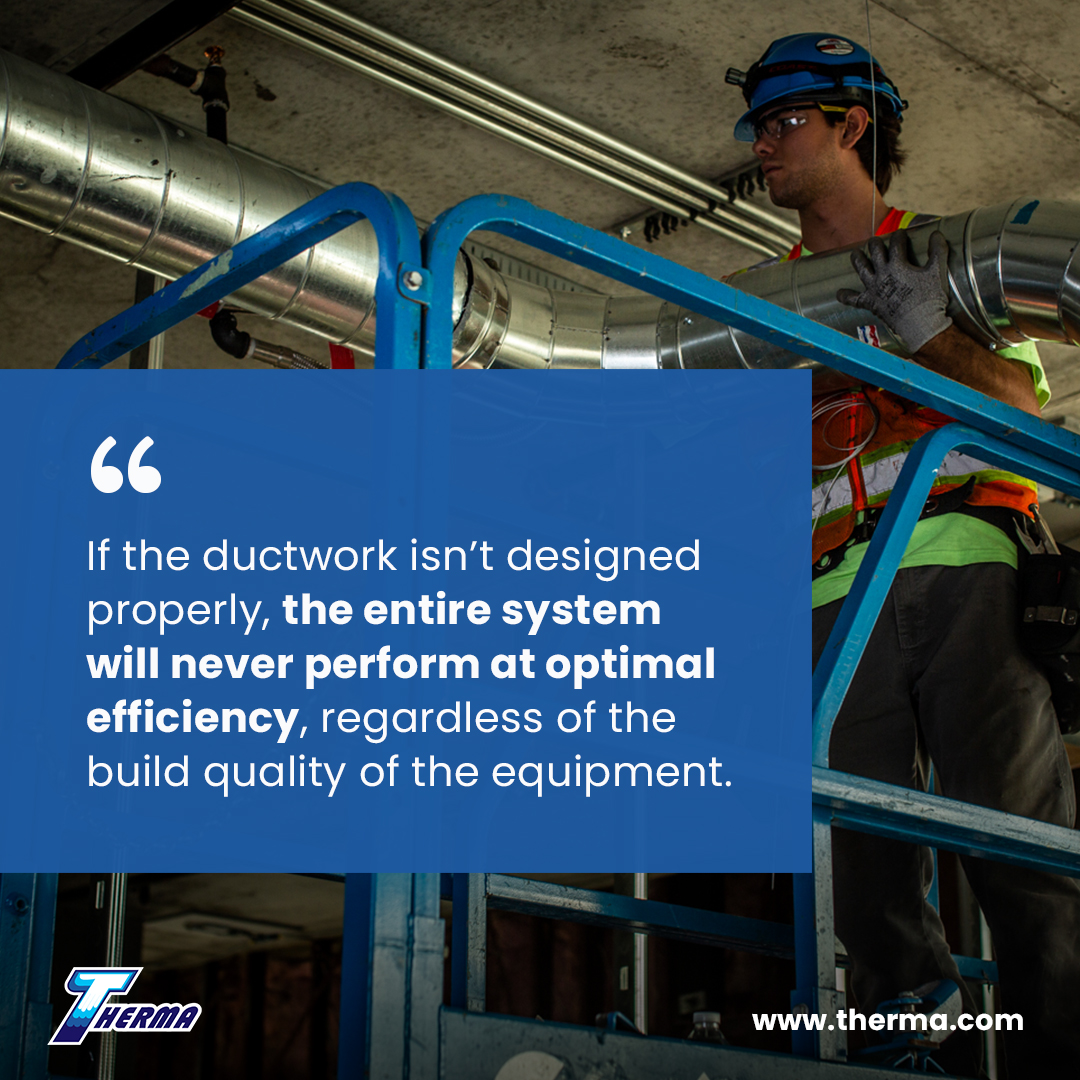HVAC Ductwork Design & You

Modern commercial heating and cooling systems are engineered to deliver economical comfort through many years of dependable operation. When running cost analysis data for new HVAC equipment purchases, most building owners and administrators thoroughly evaluate unit performance metrics. However, the extraordinary impact the air distribution system has on comfort, humidity control and utility costs is often neglected or ignored completely. In fact, deficient HVAC ductwork design and installation can be responsible for the loss of up to 30 percent of the air traveling through the ductwork due to leaks and other factors.
The Critical Role of Ductwork
In central HVAC systems, HVAC ductwork is essential for delivering conditioned air from the equipment to targeted points throughout the building. This makes ducting a vital component that must be designed and installed correctly for the entire system to operate properly.
HVAC Ductwork is generally classified by the load placed on its interior surfaces from turbulence and air pressure. For duct design, systems fall into three basic categories defined by velocity and static pressure:
- Low pressure systems: Velocity ≤ 10 m/s, static pressure ≤ 5 cm H2O (g)
- Medium pressure systems: Velocity ≤ 10 m/s, static pressure ≤ 15 cm H2O (g)
- High pressure systems: Velocity > 10 m/s, static pressure 15<ps ≤ 25 cm H2O (g)
Duct Sizing Using ACCA Manual D and Manual

A properly functioning air distribution network begins with establishing correct sizing. This is accomplished by designing according to the principles defined in The Air Conditioning Contractors of America’s (ACCA) Manual D and Manual Q. Both publications serve as a compliment to Manual J, which provides heat loss/gain calculations. In the design process, Manual D and Manual Q account for the following:
- Blower performance
- Cfm requirements by room or area
- Duct distance to each supply register and return
- Number and style of ductwork fittings
- Duct material (sheet metal, duct board or flexible duct)
- Other load restrictions
In addition to hard calculations, effective duct design includes a variety of important variables that differ depending on the application, building configuration and anticipated heating and cooling load.
- Installation cost: Cost is always an important consideration impacted by the material, duct size and the duct fittings. Since installing ductwork is labor intensive, skilled designers look for products that economize the fabrication and installation process.
- Space availability: Many choices in duct design are limited due to space constraints. Beams, walls, chases and plenums may restrict the size and type of ductwork that can be used in certain applications.
- Friction loss: Friction loss affects overall system performance and is determined by the duct’s shape, size, length and material. Fittings also affect static pressure, so it’s important to look for low turbulence components to reduce overall pressure drop.
- Noise levels: Poorly designed duct systems create objectionable noise at higher velocities. Substandard elbows and fittings may cause turbulence that raises noise levels, especially if they are installed improperly.
Other Important Duct Design Criteria
While duct design revolves largely around proper sizing, there are several other important considerations that should be included in the comprehensive engineering process.
- Select the right configuration: Ductwork can be configured in a number of ways, including the extended plenum system, spider system, reducing trunk system, perimeter loop system and radial system among others. In most instances, it’s best to choose the least complex duct configuration that will satisfy the building’s load requirements.
- Supply and return air should be equal: While this appears to be a simple concept, structural impediments often create substantial imbalances. This can lead to negative pressure situations, which degrades efficiency and may create indoor air quality issues.
- Insulate and seal the ductwork: The best duct design can be compromised by shoddy workmanship. If the ductwork is not sealed and insulated properly, efficiency may be severely degraded. All duct fittings should be securely fastened and sealed with a mastic that conforms to ASHRAE Standard 90.1.
- Install ductwork in conditioned space: System efficiency is optimized when the ductwork is installed in a conditioned space. Avoid routing ducting through areas that mirror outdoor ambient temperatures.

Duct Design is the Foundation of Your Commercial HVAC System
A commercial HVAC system is a complex mixture of mechanical equipment and air distribution components properly integrated to deliver the comfort and efficiency the client has paid for. If the ductwork isn’t designed properly, the entire system will never perform at optimal efficiency, regardless of the build quality of the equipment. Therma has many years of experience designing and installing duct systems that help ensure your entire HVAC system provides exceptional performance in all weather conditions.
By William Busse
William Busse has more than 30 years experience in the construction industry in sales, contracting, distribution and manufacturing. He has an extensive background in the mechanical contracting industry, largely from the distribution and manufacturing sides of the business. He has had deep involvement with a variety of large-scale commercial/industrial mechanical contractors, particularly related to value engineering. This includes process piping, high-pressure steam, cryogenics, thermal insulation and commercial/industrial HVAC.
Sources:







